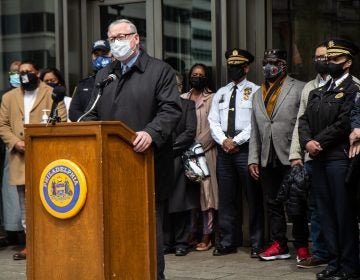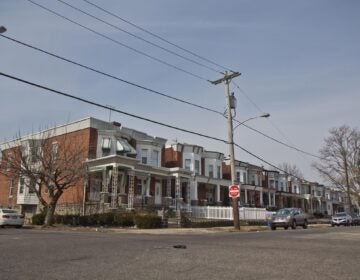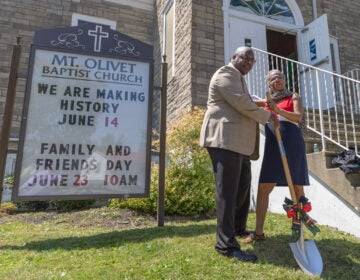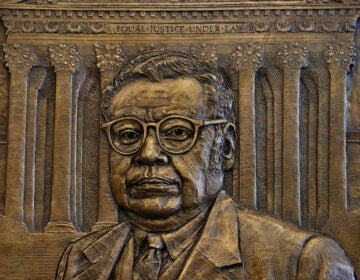Black arts landmark Dox Thrash House to live again as apartments, commercial space
Developer Beech Community Services bought the Sharswood landmark last year after activists worked to raise awareness of the Black history that happened there.
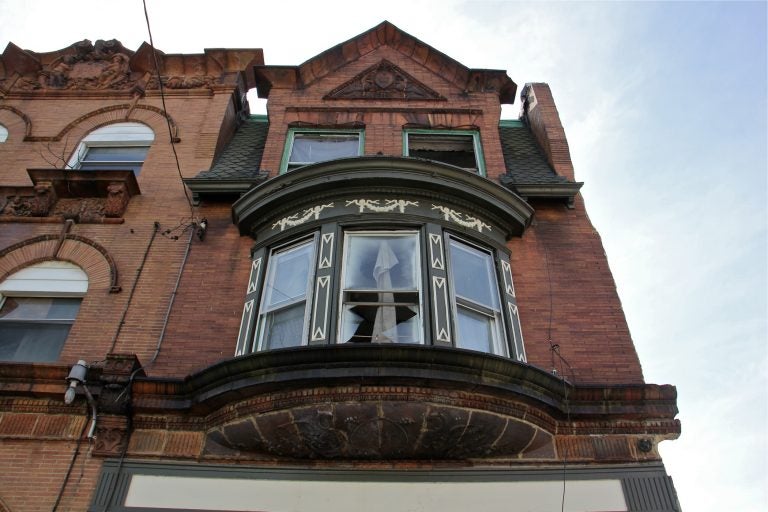
The former home of artist Dox Thrash is in a state of disrepair at the corner of Cecil B. Moore Avenue and 24th Street. (Emma Lee/WHYY)
Maya Thomas began her work advocating to preserve the Dox Thrash House, named after the Black painter and draftsman that lived there, five years ago when she was studying historic preservation at the University of Pennsylvania.
Thomas became enamored with the house, and the Black art scene that once thrived there, while she was living nearby and studying the Philadelphia Housing Authority’s renewal plan for the Sharswood area.
With two other grad students, Dana Rice and Chris Mulford, they created the Dox Thrash House Project to raise awareness and funds for saving the house at 2340 Cecil B. Moore Avenue and turning it into a hub for the arts.
Their dreams just became a lot more viable.
The Victorian house, built in 1895, has been awarded $400,000 from the Pennsylvania Housing Finance Agency and an additional $198,000 from the city for restoration. This means that the building’s owner and developer, Beech Community Services, has 75% of the funding required to remake the 125-year-old building into a mixed-use community anchor with 1,400 square feet of commercial space on the first floor and apartments above.
“We put a lot of time and energy into getting this far with the development of the project,” said Akeem Dixon, Beech’s project manager for Thrash. “We’re really excited that the state and the city found this project worthy of the support.”
Thomas is thrilled too.
“I’m super excited, this is amazing,” she said. “Projects like this don’t get funded, because of the condition of the house and where it’s located in the neighborhood, so I’m super excited to see the state and the city supporting in a real way.”
The infusion of state and city money comes after grassroots efforts to save it from neglect. The historic rowhouse survived a partial demolition that left the backside of the structure open to the elements and construction debris.
“Philly is not doing a really good job in general in preserving a lot of Black history, so to have this house come back in a real way in this community in support of the arts … I’m ecstatic about it,” said Thomas.
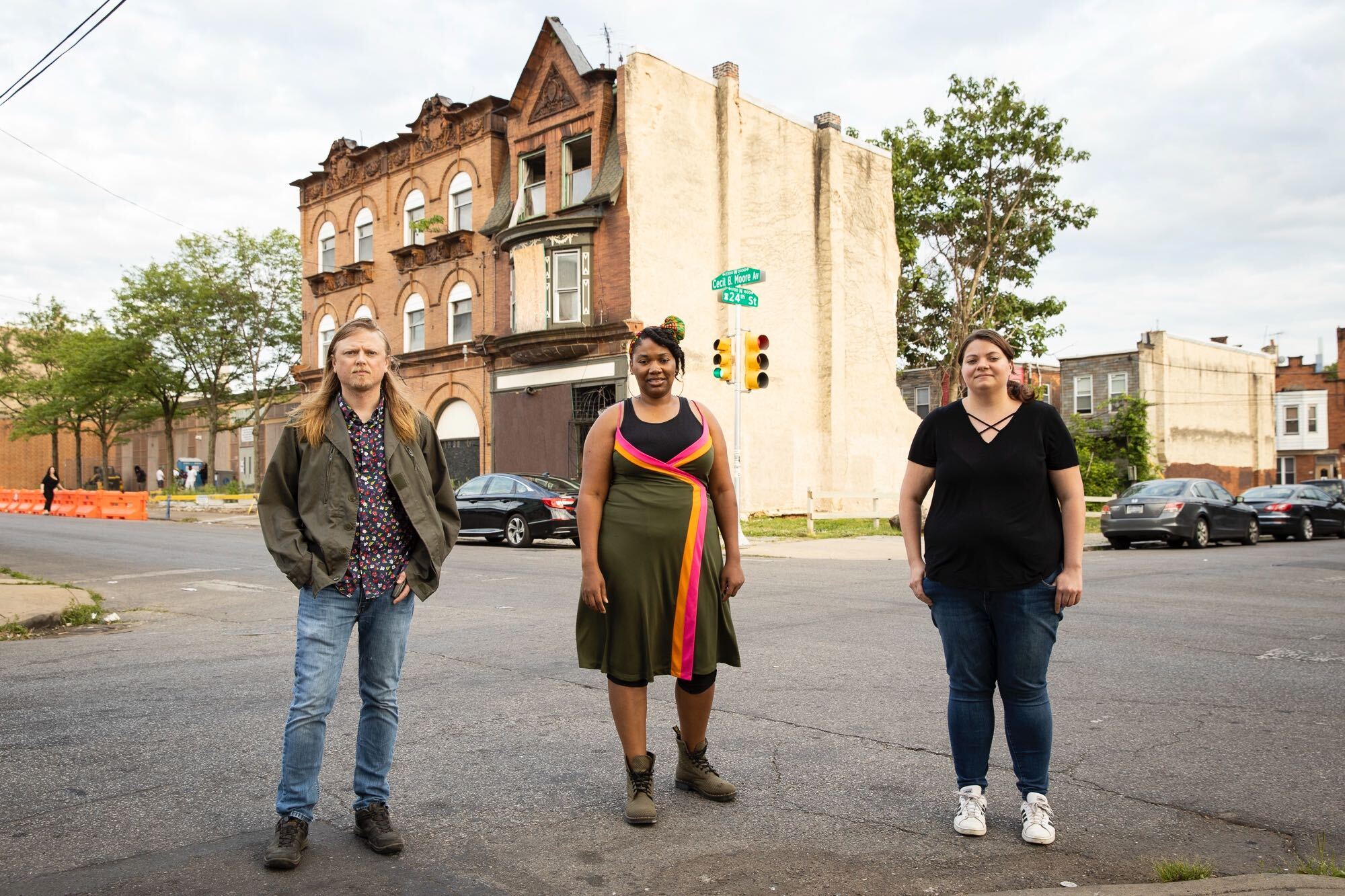
The funding from the city comes from the Commerce Department’s Neighborhood Funding Stream, which supports equitable economic development in Philadelphia neighborhoods.
“Philadelphia’s rich history includes Black men and women who contributed to our culture, our arts, our architecture, and our freedoms,” said Mayor Jim Kenney. “Restoring the Dox Thrash House will not only honor Mr. Thrash’s legacy but also support the revitalization of North Philadelphia.”
Philadelphia Commerce Director Michael Rashid linked the rehab to the city’s ongoing work to revitalize both the Cecil B. Moore and Ridge Avenue corridors.
“Commercial corridors are the economic backbone of Philadelphia, and when we invest in enhancements to neighborhoods central to Black and brown residents, that generates new jobs, goods and services for the entire community,” Rashid said.
The PHFA funding comes from the state’s Community Revitalization program.
“Rehabilitating Dox Thrash House is important because it is a vital piece of Philadelphia history,” said PHFA Executive Director Robin Wiessmann. “Saving Dox Thrash House reinforces the message that there is value in celebrating the accomplishments of people of color who enrich our country and our culture.”
The Philadelphia Historical Commission designated the house for inclusion on the Philadelphia Register of Historic Places in 2013. Jon Farnham, the executive director of the Commission, said the organization was “thrilled that this culturally important gem will be restored.”
Starting in 2018, the Dox Thrash House Project worked with Beech to try to acquire the crumbling landmark. In June of last year, Thomas and her co-organizers crowdfunded more than $107,000 to fund the restoration effort. In November, Beech finally bought it.
The North Philadelphia developer expects to acquire the rest of the funding by the end of the year and start construction soon after.

Subscribe to PlanPhilly
WHYY is your source for fact-based, in-depth journalism and information. As a nonprofit organization, we rely on financial support from readers like you. Please give today.



